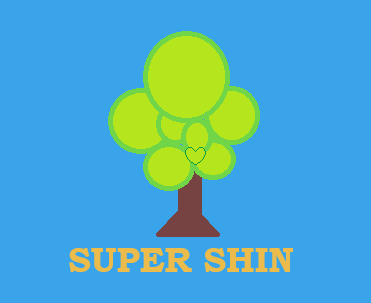My Cheonggyecheon Journey Begins
I’ve walked parts of Cheonggyecheon before, and I knew it starts at Cheonggye Plaza. I also knew it eventually connects to the Han River via Jungnangcheon (중랑천), but I’d never followed the full path. This time, I decided to walk the entire stream in reverse—starting from the point where Jungnangcheon flows into the Han River and following Cheonggyecheon upstream through the city. I took Seoul Subway Line 3, got off at Oksu Station (옥수역), and followed the signs toward Hangang Park (한강공원) to begin my walk.
Cheonggyecheon: From History to Walkway
Cheonggyecheon is a 10.9-kilometer long urban stream running through downtown Seoul, South Korea. Once covered by an overpass and considered an eyesore, it was restored in the early 2000s as part of a major urban renewal project. The restoration transformed the area into a beautiful public recreation space that blends nature, modern design, and historical elements.
The stream features walking paths, small waterfalls, and bridges, and is lined with art installations and cultural landmarks. It's a popular spot for both locals and tourists, offering a peaceful escape from the bustling city. Cheonggyecheon also holds cultural significance, as it reflects Seoul's efforts to balance modernization with environmental and historical preservation.
Starting Point: Oksu Station
 |
 |
 |
 |
Walking Beside the Han
As I exited the station, I saw Dongho Bridge (동호대교) to my right, and to my left were Seongsu Bridge (성수대교) and Dumo Bridge (두모교). I began my walk by heading toward Dumo Bridge.


On the way, I came across a sign about the vanished Jeoja Island (저자도). Once located between Oksu-dong and Apgujeong-dong near Oksu Station, the island sat between Dongho and Seongsu Bridges. Formed by sediment from the Jungnangcheon, it was a natural delta at the river’s mouth but disappeared during the development of Gangnam.

On the way, I came across these little highlights.
 |
 |
 |
 |
Jungnangcheon Meets the Han


Rest spot beside Yongbi Bridge (용비교)
 |
 |



Near the bridge, people are busy preparing the city for spring.
  |
 |

At the Junction of Cheonggyecheon and Jungnangcheon
Along the way, I came across Salgoji Bridge (살곶이다리), a historic structure with deep roots in Seoul's past. Salgoji Bridge, also known as Jeongokgyo Bridge, is a historic stone bridge from the Joseon Dynasty located in Seoul, South Korea. Construction began in 1420 during King Sejong's reign but was halted after King Taejong's death. The project resumed in 1475 under King Seongjong and was completed in 1483. Spanning approximately 75 meters, it was the longest stone bridge of its time, featuring 64 trapezoidal stone piers designed to minimize water resistance. Originally serving as a crucial link between Hanyang (now Seoul) and southeastern regions, the bridge has withstood natural disasters and urbanization. In the 1970s, restoration efforts introduced concrete elements, altering some of its original features. Today, Salgoji Bridge stands as a testament to Joseon-era engineering and is recognized as Treasure No. 1738.

Discoveries Before Cheonggyecheon Bridges



 |
 |

22 Bridges, One Stream
The diagram below summarizes the 22 bridges along Cheonggyecheon. While Mojeongyo (모전교) is the first bridge and Gosanjagyo (고산자교) is the last in the official order, I walked the path in reverse.


 |
 |
 |
 |

As you arrive, you'll see two separate paths like in the photo—take the one on the left toward the Cheonggyecheon Museum (중랑천 청계천박물관). A brige in the middle is called Jeongneungcheongyo (정릉천교).

Cheonggyecheon Museum (중랑천 청계천박물관)
 |
 |

 |
 |
Views after Dumuldari (두물다리)


These piers are remnants of the Cheonggyecheon Overpass, which was demolished in 2006. Once a symbol of South Korea’s rapid development from the 1960s onward, the overpass was removed during the Cheonggyecheon Restoration Project due to structural deterioration and traffic congestion. In 2013, the remaining piers were designated as Future Heritage for representing Korea’s modernization and Seoul’s urban transformation.
 |
 |
At the meeting point of Cheonggyecheon and Seongbukcheon, Biudang Bridge (비우당교) on the left crosses Cheonggyecheon, while Seongbukcheongyo (성북천교) on the right spans Seongbukcheon


There have been exhibitions and cultural exchanges between Seoul and Jeju, some of which are reflected in public art installations along Cheonggyecheon. These reflect broader efforts in exchange and cooperation (교류 협력) between regions.
 |
 |

 |
 |
 |
 |

 |
 |


Close-up view of Malgeunnaedari (맑은내다리) Bridge
 |
 |



 |
 |

 |
 |

















The Heart of the Stream: Cheonggyecheon Plaza





Conclusion
Walking the full length of Cheonggyecheon - from where it meets the Han River all the way to Cheonggyecheon Plaza - was a truly rewarding experience. Along the way, I discovered a different side of Seoul: peaceful, blooming with spring colors, and full of quiet charm tucked beneath the city's hustle. The journey left me both physically refreshed and spiritually uplifted.
Reaching the plaza felt like arriving at a gateway to more adventures. From here, travelers can easily explore nearby highlights like Insa-dong’s cultural streets, the serene beauty of Changdeokgung Palace and its Secret Garden, or the inspiring exhibits at the National Museum of Modern and Contemporary Art.
This walk reminded me how Seoul continues to surprise—one step, one bridge, and one stream at a time.
